
The history of British quilting is incomplete, because by the time that its value as a heritage skill was properly recognised regional quilting practice was no longer widespread. The parts of the country that still had a tradition to research at the start of the 20th Century (the North Country and Wales) are often thought by quilters to be the only places where quilting styles were recognisable and distinctive. Yet if you scratch a little further beneath the surface of quilt history in this country there are incomplete but tantalising clues about how regional quilts looked before anyone was interested in writing down patterns, publishing designs, or keeping any kind of record of the long careful work of women from castles to cottages. This quilt explores a long held area of interest of mine and i’ve thoroughly enjoyed researching and planning it over the past couple of years, and working on it this long strange, sunny Covid-summer.
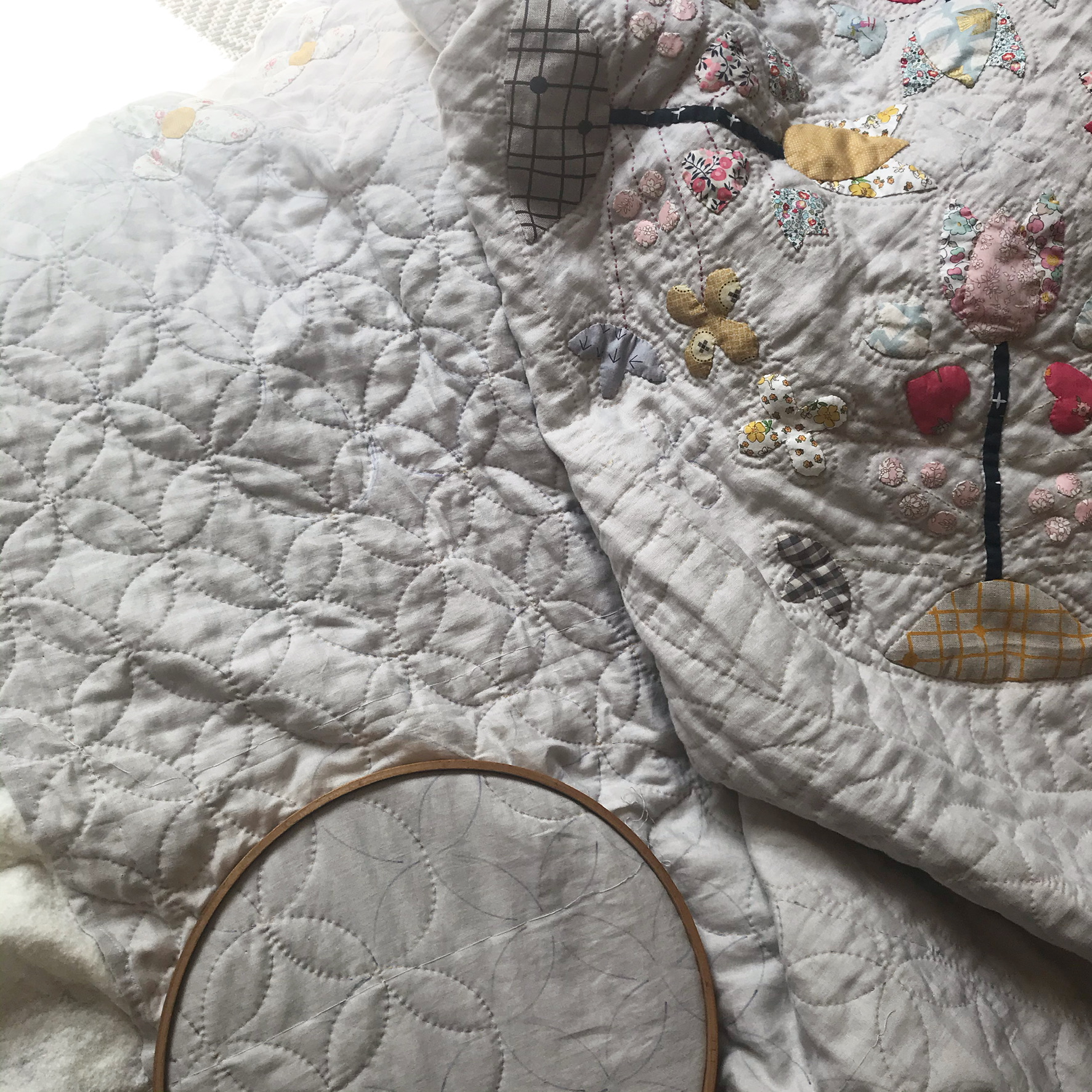
As we’ve all been at home so much, travelling hardly at all from the fields or streets around our homes, inevitably we’ve all felt more rooted in the places that we live. With no international travel, and often our horizons limited to the few miles around our homes, we’ve lived geographically like so many of the women who made the historical quilts that we study today. I’ve felt very grateful for the calming changes of nature in this sunbaked spring and summer, and found comfort in hand stitches as the outside world was reeling from the pandemic. As a student historian I find great solace in the sense of ‘this too will pass’. The idea that our troubles are just a small turn of the wheel of time, and that the daily horrors of the news will pass into history and lose their immediacy and pain. Making a quilt to celebrate things that felt timeless….the English countryside in May, the traditions and skills of the women who made quilts in the past, the rich iconography of rural England, the joys and worries of daily mothering – all felt like a way to lean in to the sense of being a maker in a chain of makers, practicing the same skills back into time, and to find some calm from the choppy seas of 2020.
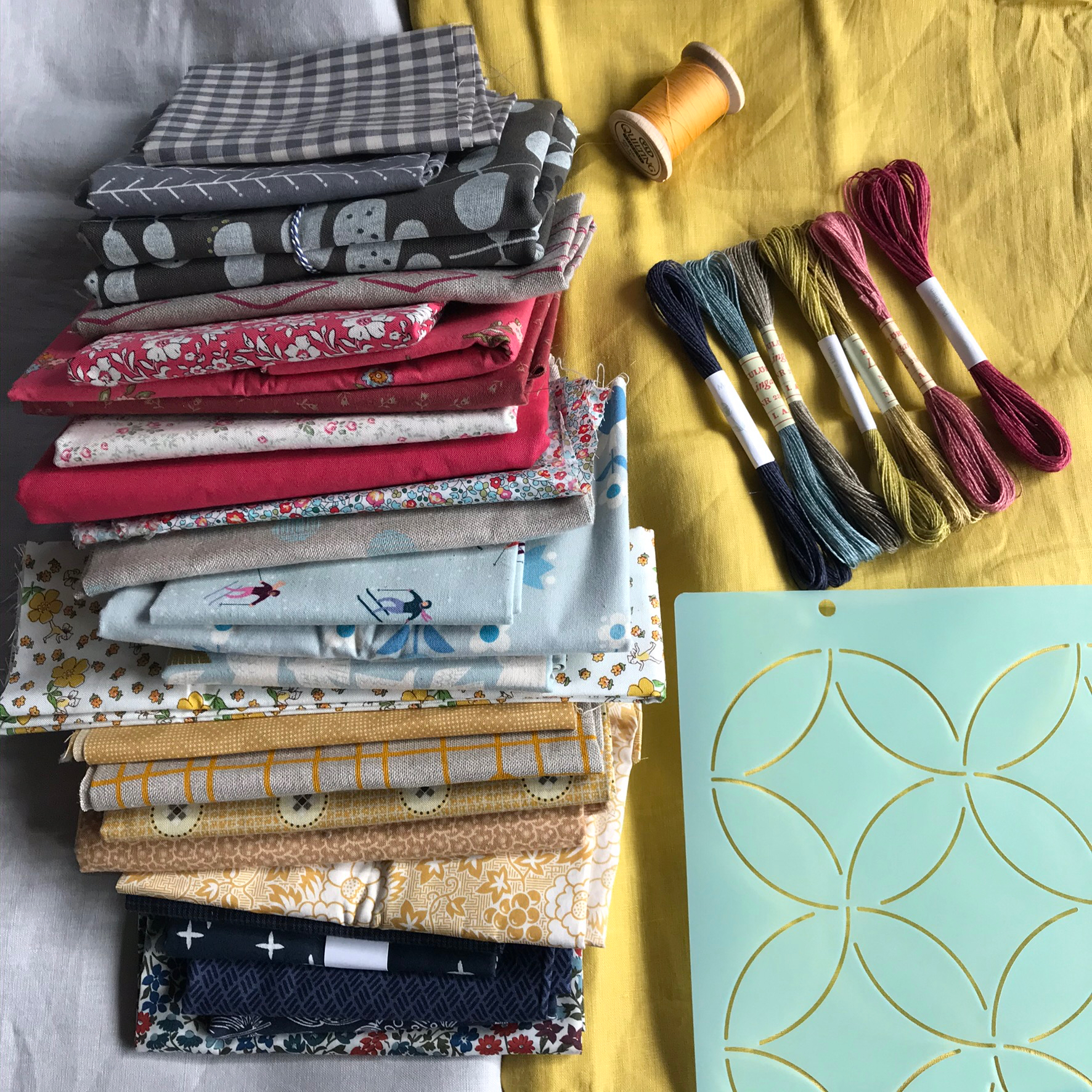
The history of British quiltmaking remains less well known than it deserves amongst many makers, especially new quilters, and I’m always keen to highlight what a rich history we have in this craft in our country. I’ve lived outside of the UK and I’m sure that the experience of being an expat makes you fonder of your own country and its folklore. This years events have been unique in that they have simultaneously caused us to be closer to our very local area, whilst being so interconnected to the fates of the rest of the world, places where we could not hope to travel to this year. In this we share a perspective to our sisters of the past, who lived largely local existences but whose textile lives were always impacted greatly by the geopolitics of the wider world.

Quilting and patchwork are ancient practices, whose roots are lost to us as they stretch back before history. Europeans exported both skills as they emigrated to the new world and the new Americans took on and evolved the craft, impacted by the unique societal and environmental factors in that continent, and they in turn fed back influences and new styles to the UK. Part of the beguiling fascination for me of quilt making is the constant relationship between its locality and it’s internationalism. Quilts are uniquely local, patterns and designs are passed maker to maker and were often specific to small geographies, especially in areas where people moved little. Yet the quilts that they made, the fabrics they chose and the styles and designs that they worked within were often shaped by the forces of international trade and migratory population movements. This means that the quilts that these makers left for us to explore are always reflections of all of these tensions and influences – perfect time capsules of a point in time, in a place in time. When I make a quilt, I want it to reflect these same tensions. Tempting though the modern quilt industry is with it’s global quilt-along patterns and ready-picked bundles, my heart lies in making quilts that could still be linked back to here and now, and whose roots are unmistakably in this country’s vernacular quilting practice.

Unfortunately this history of British quiltmaking has not been perfectly captured, these grainy black and white plates are taken from archive pictures in a pamphlet by the V&A in the 1920s called Notes on Quilting (which incidentally inspired the name of my quarterly The Quilter Magazine column ) which you can read about at the link if you are interested in this little known but important part of British quilting history. Women’s making was poorly recorded in the past, quilts were little valued outside the family and the practice of quilt making was already waning significantly and passing out of living memory by the time that records started to be taken in the 1920s and 30s. We are reliant on few original research sources for exploration of British quiltmaking, and as they were focussed on the areas of South Wales and Durham and the North Country, we inevitably know much more about these areas. These areas have much better records because quilt making continued as an economic practice a long way from the urban centre of London and the South East. Yet when we look at the quilts that have survived in British (and in international museums that have British provenance) we see much wider and richer variation in styles and influences than those more well known areas of our quilting past.

The quilting styles of England, the Midlands, the West Country, share some characteristics that i’ve always loved. Described as ‘floral’ in the few written records and characterised as ‘unruly’ these patterns are sometimes lightly disparaged for lacking the geometric precision of Welsh quilting and lacking the ambitious symmetry of the Durham floral traditions. Yet these ‘flaws’ were exactly what drew me to the quilts! They had a unique sense of the maker, the hand of the designer was clear. The fronds of florals wove carelessly across the quilt, strewn with images of the native blossoms and tendrils, they were the spirit of the English Cottage Garden wrought in fabric.
Last year I worked on my The Misses Baron Quilt, a modern take on the whole cloth tradition of the North Country. This year I wanted to bring the same approach to the quilts of the Midlands and South of England. Drawing on several examples that are preserved in the 1930’s research of Elizabeth Hake, I started to draft my own version. Whilst I love to see contemporary remakes of old quilt patterns, I never like to ‘copy’ a pattern, rather to be inspired by it’s ideas and make something for now. I have no formal boundaries in where on the continuum I sit but I just go where the ideas take me and try and stay true to a modern aesthetic whilst drawing from the traditions of the past.

I knew my design had to include a central medallion, a style that was so common to these quilts and many English quilts for more than two hundred years. I wanted to include motifs of a floral nature and that there had to be characteristic wineglass infill which was so commonly seen. I also knew that it had to be made in linen. When people think of quilts these days they very much associate them with cotton. But cotton was not widespread in the 18th Century, the time when many of these wholecloth quilts were made. Linen was the staple fabric of choice ( if you couldn’t afford silk, or it was too hot for wool). Colourwise, I had my heart set on this bright egg yolk yellow, the most fashionable colour of the mid to late eighteenth century ( see my continued obsession with this colour in my 18th Century Quilted Petticoat Project from this summer too).

I picked up these beautiful linen threads in the spring and this palette set my fabric pull for the quilt. After much research I ended up using two flat linen bedsheets, their loose gauzy weight perfect for the summery quilt I had in mind and their size meaning I had not to add any central seaming to get to the kingsize finished dimension I had planned for my bed.


As with my The Misses Barron Quilt, I wanted to pick out some parts of the design in applique. I love the spare discipline of a wholecloth quilt, but I also love colour and pattern and so this pairing of the two styles is my favourite way to work. The quartered central medallion of this quilt was taken from a corded quilt that was made in Leicestershire, the county of my childhood. Made at the start of the 1700’s it’s design is strikingly modern, I used the lines of a quilted floral motif from another quilt from the west country and made it applique in modern fabrics, including screen printed fabrics by Collette Moscrop,a maker who lives locally, to root the quilt to this area in this time.

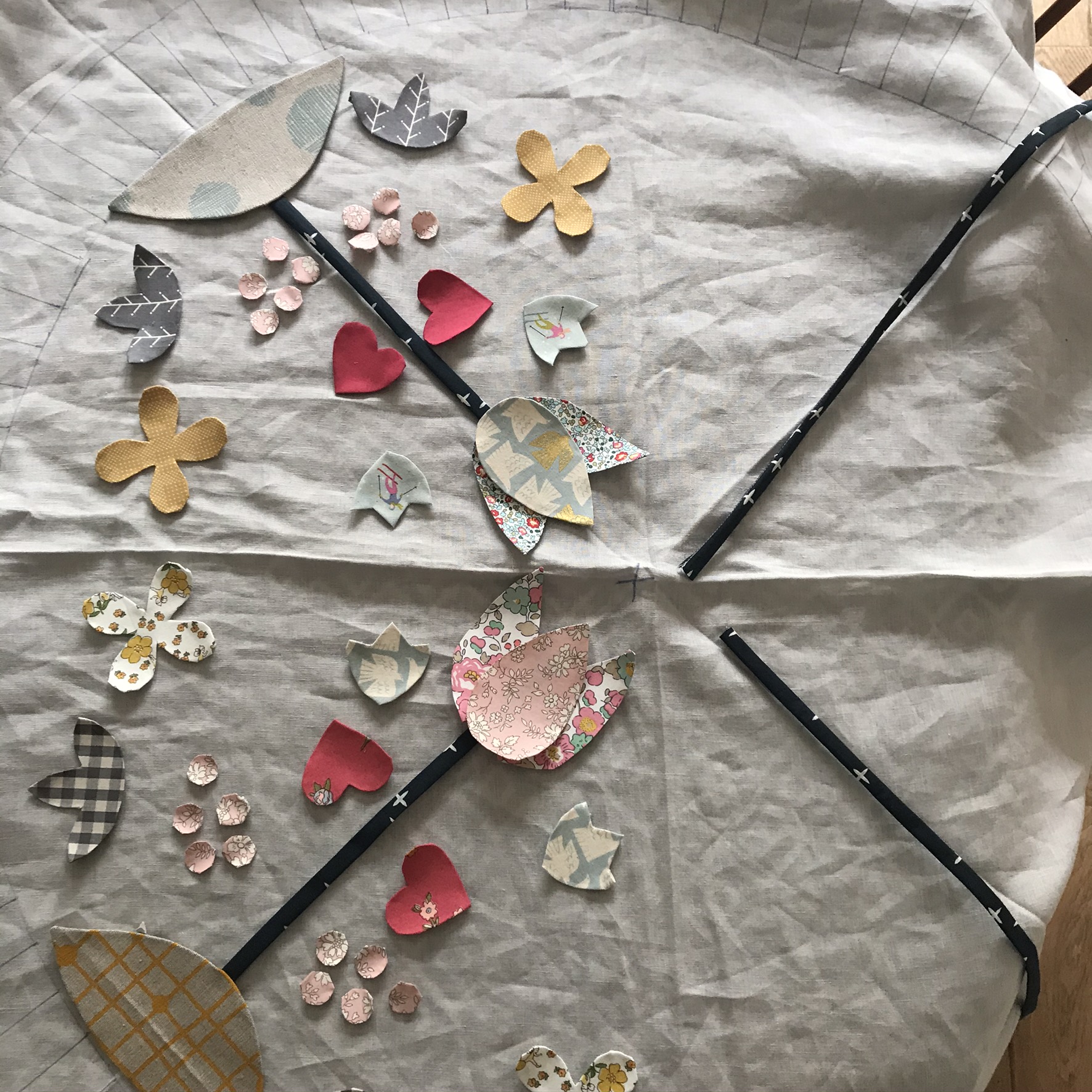
Once the central motif was in place I then turned to marking up the wholecloth element. This was a huge job and the shifting warp and weft of the loosely woven linen made it a complicated undertaking, but the very wonky nature of the originals cheered me no end 😉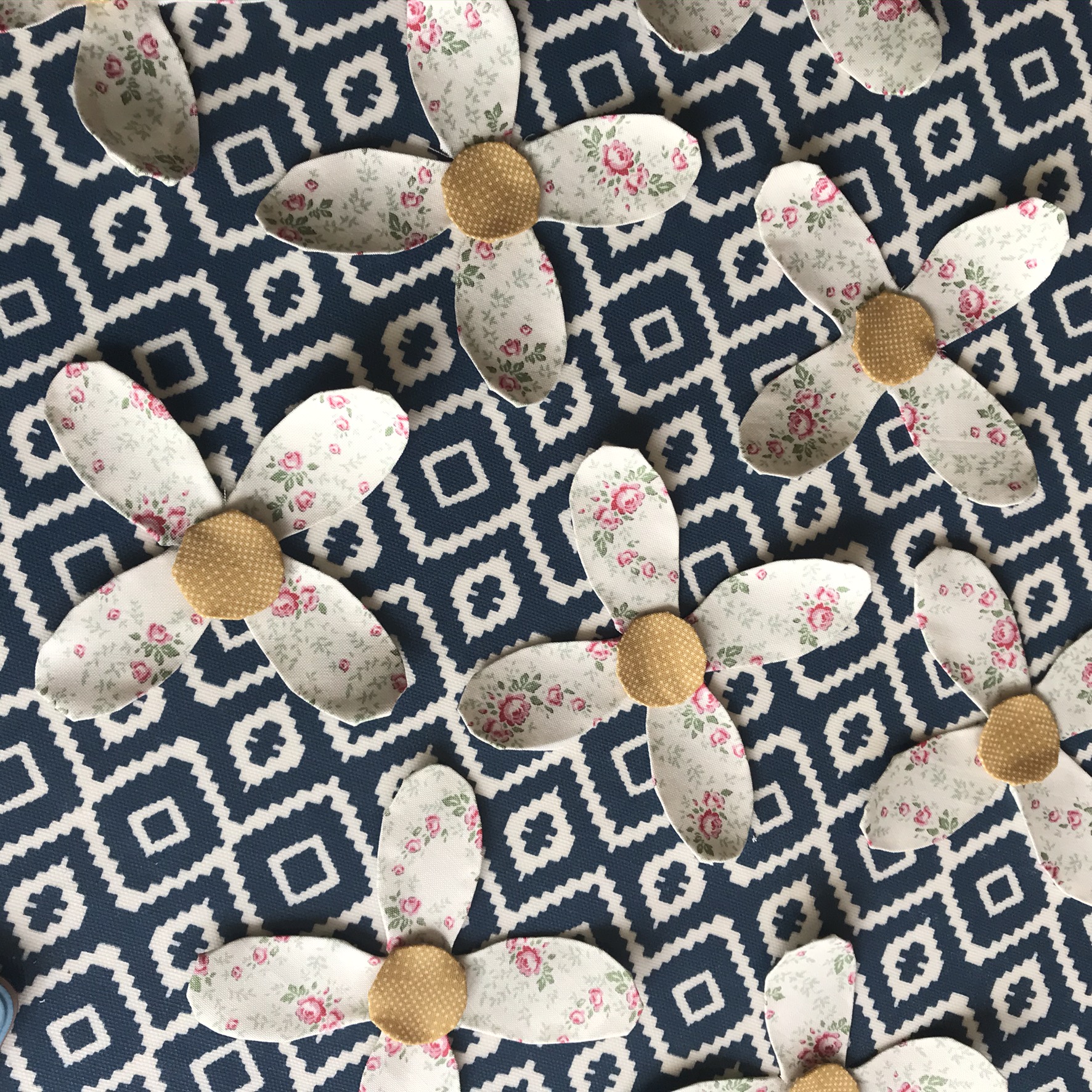
I like to name my quilts, and take a lot of time and consideration in giving them a name that reflects their roots. I am a post graduate student studying material history via quilts and quiltmaking in the UK. During my research I came across a poem in a West Country newspaper in the 1800’s by an anonymous author calling themselves The Devonshire Postman. This was a sentimental poem called ‘Dear Old England’ about the beauty of the English countryside and contained the perfect line ‘This daisy-quilted England’ in description of it’s fields and meadows. The sense of daisies ‘quilting’ the billowing grasses stayed with me as I walked the Chiltern Hills around my house during the lockdown, punctuating the landscape with the characteristic puckers of quilting. I knew it had to be the name of this quilt, and that the quilt should contain daisies….an ode to England’s meadows and its quilters.



I’m slowly hand quilting my way through this project this endless summer with my kids home since March and the sun shining mercifully on much of our home time. The long days of this quiet summer and the fevered worry and fretting of the spring lockdown are both soothed by the quiet repetition of hand quilting. It’s always been a tonic to me, a way of rocking hands in a timeless eternal rhythm akin to how we rock a baby. I find the measured lines, unthinkingly followed, repeating and repeating, just focusing on the small inches ahead, richly comforting. It’s a pleasure, not a hardship, to hand quilt and I’m hoping to make this last all summer, to still the worries and fears of the winter ahead, and instead to immerse in thinking about the generations of women who doubtless stitched their cares and worries for the future and their families into the beautiful quilts that they made to inspire us today.
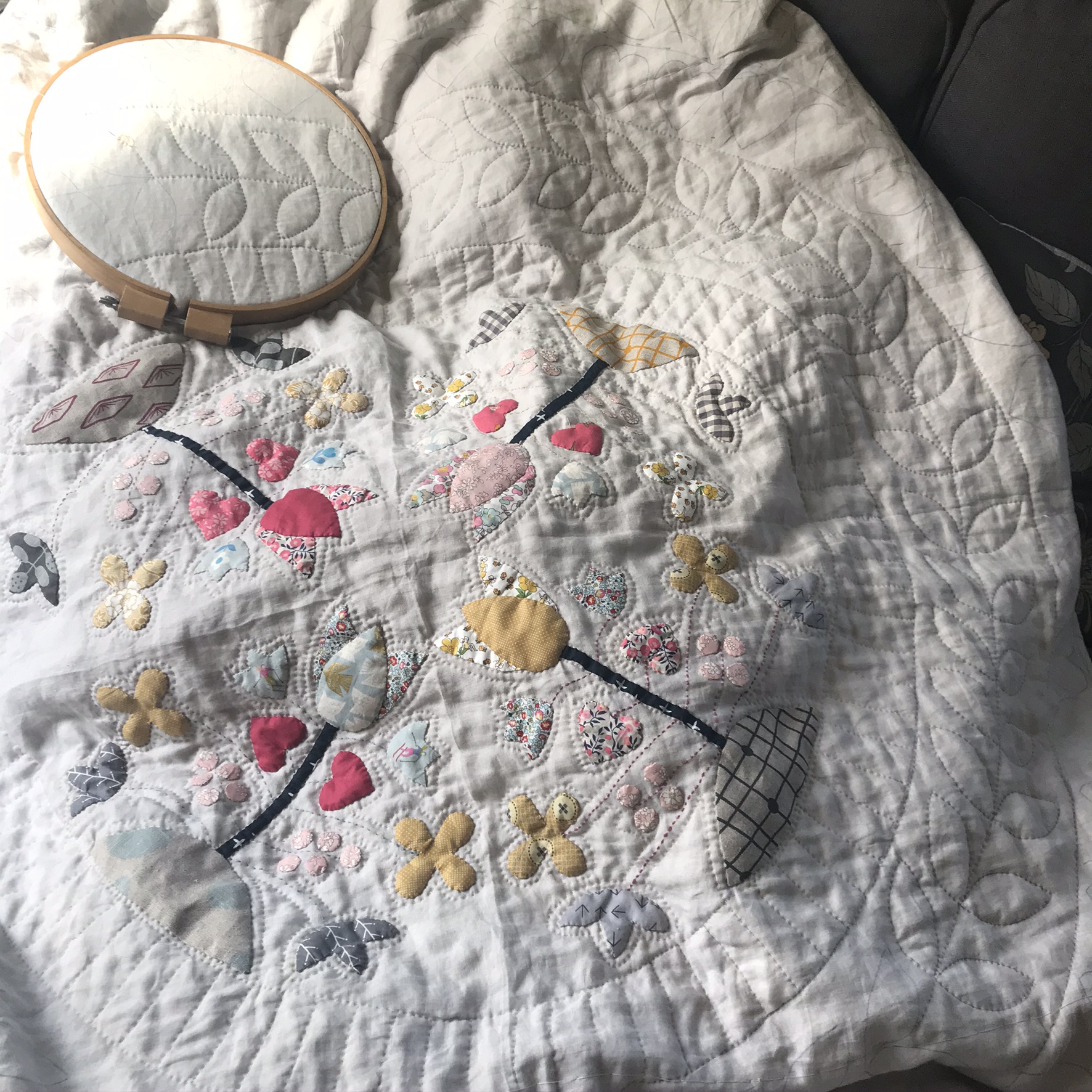






7 thoughts on “The Daisy Quilted England Wholecloth”